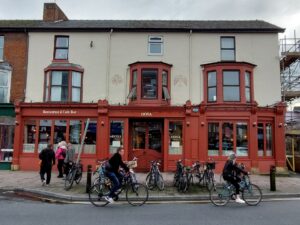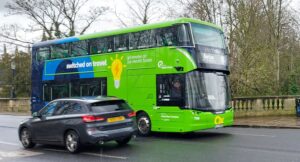Graham Smith
New housing, new roads. Is there a link between climate change and refuse vehicles?
Highways departments’ rules and guidance have controlled new housing developments for the past 80 years. Many have led to roads not streets, units not homes, and ‘could-be-anywhere’ housing developments, not real places with centres and edges.
A range of rules have effectively stopped us getting out and about, including making bus services unprofitable, walking and cycling for transport an impossibility for most, preventing us meeting our neighbours, stopping us from creating communities and locking us into car dependence.
These problems were addressed with national guidance about connecting places; Manual for Streets, 2007. Why are we not benefitting from such layouts now, rather than the car-trip-demanding developments we are still seeing around the county? It’s because county guidance hasn’t kept up with national guidance, even though the County’s Guidance was renewed in 2015. It’s as if the 1970s car-dominated ways are preferred.
A current draft County Street Design Guide says it “fully endorses Manual for Streets…however, [we] will still expect streets designed to allow refuse vehicles… to access the areas of a development.” Reasonable enough, but; “relevant tracking diagrams demonstrating a refuse vehicle safely negotiating the street… are… 11.6m long throughout… the county.”
If housing layouts are designed to make it easy for the largest refuse vehicles, and by using the word ‘safely’ – implying that not having to cross the centreline when turning and wide sweeping roads – then any change to enable better streets is simply prevented by these words. The link is that by accommodating these refuse vehicles, car-driving is bolted in for the future, and climate change is ignored.






